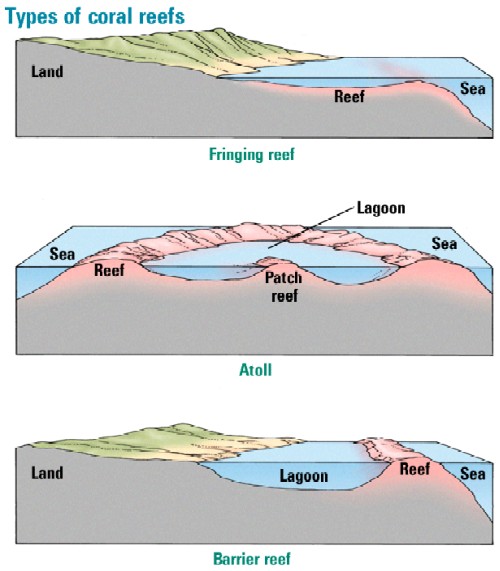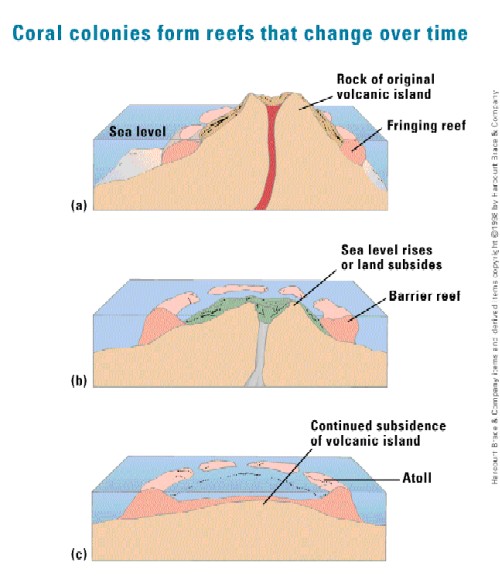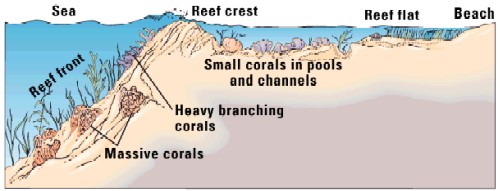- Fringing reef: larvae attach to sublittoral hard bottom; as corals grow, a fringing reef is formed along the coast (Caribbean Sea)
- Barrier Reef: if land sinks and corals grow upwards, a lagoon will separate the barrier reef from land (Australia, Great Barrier Reef)
- Atoll: last geological stage of sinking volcanic island; circular reef remains around lagoon, because corals keep growing upwards on the out-side; calm water and sedimentation prevents coral growth in the Lagoon (South Pacific)

Development of an Atoll
- Three basic types of reefs and hypothesis on reef formation formulated by Charles Darwin; only proven in the 1950‘s by geological drillings
- Growth of corals <1 – 10 cm yr-1
- Growth of reefs, however, only few mm to 3 cm yr-1
- Erosion occurs by wave action and tropical storms
- Bioerosion by animals that bore into the reef or remove coral skeletons by grazing
- Competition for space and light can limit coral growth

Zonation of a Reef
- Reef flat has branching corals and alge; sheltered from wave action
- High-energy wave zone beyond reef crest above 10-20 m has massive head corals
- Lower reef front has delicate plate coral forms; ahermatypic forms, sea fans, and sponges become more dominant because of light limitation with increasing depth
- Depth limit of hermatypic corals ist ca. 50 m in the Pacific and 100 m in the Caribbean; at ca. 50 m, the coral rock slope steepens into the deep
